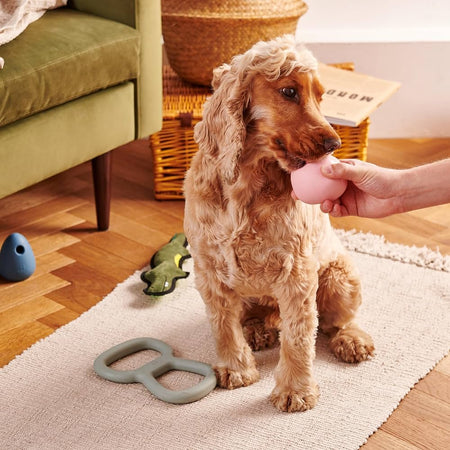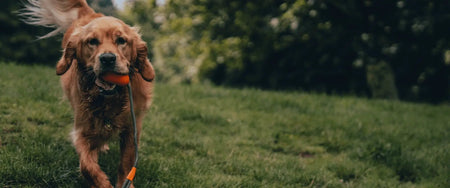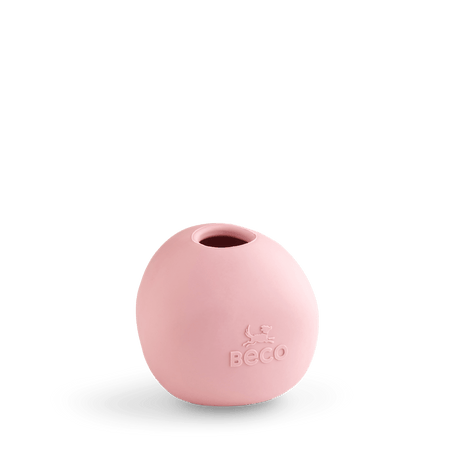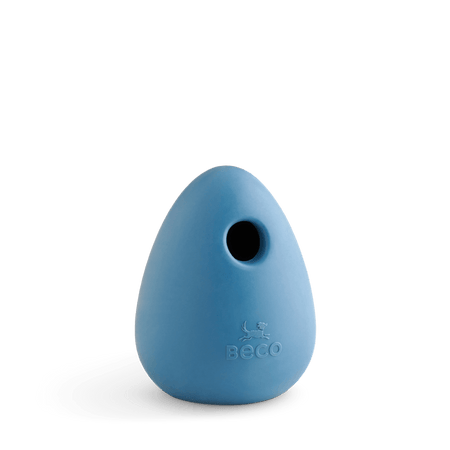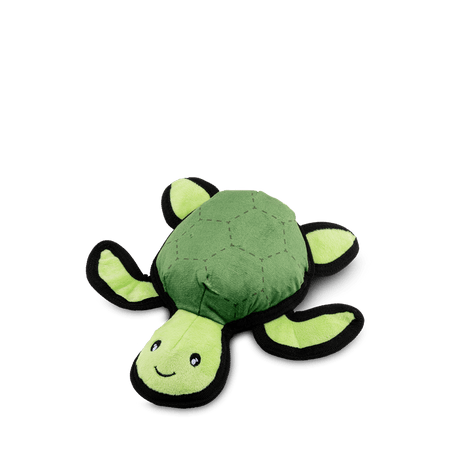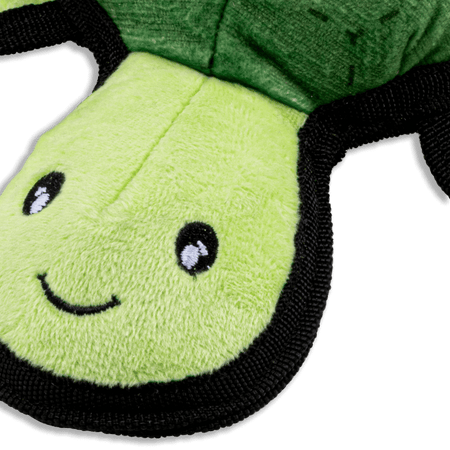We’ve all been there: heading out the door with your dog giving you the “please don’t go” look, knowing they’ll be left to their own devices.
But leaving them alone doesn’t have to mean a lonely, destructive day.
Without enough mental stimulation, dogs can turn to chewing, barking, or worse (RIP, couch cushions).
We’ll share creative and effective ways to keep your dog engaged, happy, and out of trouble while you're away – from puzzle toys to scent games and more.
- Provide mentally stimulating toys and puzzles that dispense treats and challenge your dog's problem-solving abilities.
- Establish a consistent routine with proper exercise before departure to reduce separation anxiety.
- Rotate toys regularly and use slow-feeders to extend engagement during alone time.
Understanding Your Dog's Needs
Before implementing entertainment solutions, it's crucial to assess your dog's requirements.
Different breeds, ages, and personalities respond to various types of stimulation in distinct ways. A Border Collie might require complex puzzle toys to satisfy their problem-solving instincts, while a Basset Hound might prefer scent-based activities.
The T.E.M.P. Assessment Framework
To determine the most effective entertainment strategy for your dog when home alone, consider the T.E.M.P. assessment framework:
-
Temperature: Dogs have different energy levels at various temperatures. During warmer weather, cooling mats and frozen treats can provide both comfort and entertainment. In cooler months, warm bedding near a safe heat source might be preferable.
-
Environment: Your home's layout significantly impacts your dog's experience when alone. Consider whether your dog has access to windows for visual stimulation, sufficient space to move about, or a designated quiet area for relaxation.
-
Mood: A dog's emotional state affects their entertainment preferences. Anxious dogs typically benefit from calming activities and familiar objects, while confident dogs might enjoy more challenging puzzles and toys.
-
Physical state: Your dog's age, health conditions, and activity level determine appropriate entertainment options. A senior dog with arthritis requires different stimulation than an energetic puppy.
By evaluating these factors, you can create a personalised entertainment plan that addresses your dog's needs when home alone.
Breed-Specific Entertainment Needs
Different breeds have distinct instinctual drives that influence their entertainment preferences:
-
Herding breeds (Border Collies, Australian Shepherds) benefit from mentally challenging puzzle toys that require problem-solving skills.
-
Scent hounds (Beagles, Bloodhounds) thrive with nose work activities like snuffle mats and scent-based games.
-
Terriers (Jack Russells, West Highland Terriers) often enjoy digging activities and toys that allow them to "hunt" for treats.
-
Guardian breeds (German Shepherds, Rottweilers) typically appreciate activities that provide a sense of purpose, such as monitoring windows or guarding a specific toy.
-
For mixed-breed dogs, observe which activities naturally engage them and incorporate these into their alone-time routine.
Audio-Visual Stimulation Techniques
Audio-visual stimulation provides a significant environmental enrichment component for dogs home alone, helping to reduce stress and prevent boredom.
Music and Sound Frequencies
Research from the Scottish SPCA and University of Glasgow demonstrates that certain music genres significantly impact canine behaviour:
-
Classical music, particularly pieces with 50-60 beats per minute, has been shown to reduce stress hormones in dogs.
-
Specially composed dog music that incorporates simplified melodies and specific frequency ranges (432 Hz has shown promising results) can help calm anxious dogs.
-
Audiobooks with calm, steady narration provide comforting human vocal patterns that many dogs find reassuring.
Several streaming services now offer specialised playlists for dogs, including "Calm Dog Music" on Spotify and dedicated channels on YouTube. For the best results, introduce these sounds during positive experiences when you're present, then gradually incorporate them into alone time.
Interactive Toys and Environmental Enrichment
Mental stimulation through interactive toys and environmental enrichment helps prevent boredom-related behaviours and provides cognitive exercise for dogs left alone.
Choosing the Right Interactive Toys
When selecting interactive toys for your dog's alone time, consider these factors:
-
Safety: Choose durable, appropriately sized toys that cannot be broken into swallowable pieces.
-
Engagement duration: Look for toys that provide extended entertainment rather than those quickly emptied of treats.
-
Difficulty level: Match puzzle complexity to your dog's problem-solving abilities to prevent frustration.
DIY Enrichment Activities
Frozen Treat Dispenser Recipe
-
Mix your dog's regular food with a tablespoon of xylitol-free peanut butter
-
Stuff the mixture into a treat-dispensing toy
-
Freeze overnight
-
Present to your dog just before leaving
Sniff Stations
-
Hide small treats or pieces of kibble throughout your home
-
Place them in increasingly challenging locations
-
Create a "treasure hunt" that engages your dog's scenting abilities
These DIY options provide mental stimulation while satisfying natural foraging instincts, helping to reduce stress when home alone.
Addressing Special Needs and Multi-Dog Households
Dogs with special requirements or those sharing homes with other canines present unique entertainment challenges when left alone.
Entertainment for Senior Dogs
Older dogs benefit from adapted entertainment strategies:
-
Cognitive enrichment toys with larger openings and simpler mechanisms accommodate declining dexterity while still providing mental stimulation.
-
Scent-based activities remain engaging even as vision and hearing diminish, making them excellent choices for senior dogs.
-
Orthopedic bedding positioned near entertainment sources ensures comfort during engagement with toys or visual stimulation.
For dogs showing signs of cognitive decline, establish consistent routines with familiar toys and sounds to reduce confusion and anxiety when alone.
Multi-Dog Household Strategies
When entertaining multiple dogs home alone, consider these approaches:
-
Individual entertainment zones prevent resource guarding and allow each dog to engage with activities suited to their preferences.
-
Complementary toy selection based on each dog's play style reduces competition — for instance, providing a puzzle toy for one dog and a chew toy for another.
-
Monitored group activities like snuffle mats placed in separate areas can provide simultaneous entertainment without conflict.
Frequently Asked Questions
How long can I leave my dog alone at home?
Adult dogs can typically be left alone for 4-6 hours, while puppies need attention every 2-3 hours. Senior dogs may also require more frequent breaks. Never leave your dog alone for more than 8 hours without arranging for someone to check in.
What signs indicate my dog is experiencing boredom or anxiety when left alone?
Watch for destructive behaviour, excessive barking, pacing, inappropriate elimination, escape attempts, or depression. These may signal your dog needs more mental stimulation or could be developing separation anxiety.
Are there breed differences in how dogs handle being left alone?
Yes, some breeds like Border Collies and German Shepherds need more mental stimulation, while others like Basset Hounds and Bulldogs may be more content with less activity. Research your specific breed's needs and adjust accordingly.
Should I leave the TV or radio on for my dog when I'm gone?
Many dogs benefit from background noise that masks outside sounds and provides company. Choose calming music, dog-specific content, or nature sounds rather than action movies or loud programming that might cause stress.
What should I do if my dog's separation anxiety doesn't improve with these techniques?
Consult with a veterinarian or certified animal behaviourist who can provide professional guidance, behaviour modification programs, or, in severe cases, recommend appropriate medication to help manage anxiety.
Conclusion
The secret to keeping your dog happy when home alone lies in understanding what makes them tick.
From tailoring activities to suit your Border Collie's problem-solving nature or creating scent stations for your curious Beagle, the right approach makes all the difference. With proper audio stimulation, interactive toys that match their abilities, and adjustments for age or special needs, you'll return to a content canine rather than destroyed cushions.
Remember to regularly switch up their entertainment options — dogs, like us, appreciate variety in their day.
Fancy giving your four-legged friend something special for their alone time? Our soft toys and natural rubber options are waiting to become your dog's next favourite companion.


